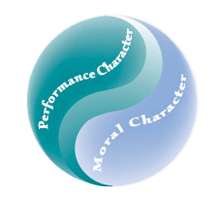
hree
years ago the Templeton-funded report,
Smart & Good High Schools:
Integrating Excellence and Ethics for Success in School, Work, and Beyond,
set out a blueprint, for the first time, for effective character development
in a high school setting, based on a national

study of 24 diverse, award-winning
schools.

The report’s co-authors, Dr. Thomas Lickona, professor of education at
the State University of New York at Cortland and director of its Center
for the 4th and 5th Rs (Respect and Responsibility), and Matthew Davidson,
formerly the Center’s research director and now the director of the newly-created,
non-profit Institute for Excellence and Ethics (IEE), have been awarded
further grants to pursue a more broad-based program. Now entitled the
Smart & Good Schools Initiative, the project is being jointly carried
out by the Center and IEE and is aimed at building a national network
of schools interested in implementing the Smart & Good vision.

“One major accomplishment in this phase of our work,” says Davidson,
“is building the infrastructure and capacity of IEE, beginning with staff.
We hired Dr. Vladimir Khmelkov, previously with the University of Notre
Dame, as our director of research and technology. We are also developing
a Smart & Good Schools faculty, which expands our ability to do trainings
on the model.”

Lickona explained that the Smart & Good Schools grant proposal called
for “weaving the Smart & Good vision into the lining of other organizations.”
Lickona and Davidson have developed a vetting system for potential partners,
and this has helped them to collaborate with an agency specializing in
school transitions, with a character education organization in the state
of Iowa, and with their first “lab school” that will enable them to field-test
Smart & Good practices and materials.

They have also made a good start on fundraising for the grant match,
with one donor contributing $300,000 and a development team in place
to pursue multiple fundraising strategies. A core leadership team of
four members is now heading the project, which is carrying forward the
twin-track principles defined in the original report: the complementary
promotion of “performance character” (doing one’s best work) and moral
character (being one’s best ethical self in relationships).

In the Smart & Good Schools vision, these two major parts of character
are further defined in terms of eight specific strengths of character
that serve as the “target developmental outcomes of schooling”: critical
thinker, diligent and capable performer, socially- and emotionally-skilled
person, ethical thinker, respectful and responsible moral agent, self-disciplined
person, democratic citizen, and spiritual person engaged in crafting
a life of noble purpose.

As a guide to developing these traits, Lickona and Davidson are pilot-testing
an interlocking set of pedagogical strategies they call “the four keys”:
self-study (self-assessment and goal-setting), other-study (learning
from the positive and negative examples of others), public presentation
(sharing one’s goals and work with others), and a community that supports
and challenges.

In promoting this agenda in schools, is negative peer pressure a problem?
Lickona responds, “For high school students, peer influence is arguably
the most important part of the school culture that either helps or hinders
character development. Smart & Good Schools don’t leave that culture
to chance; they deliberately and proactively shape it in positive ways.
Most high schools, unfortunately, don’t take intentional steps to mobilize
peer pressure in the service of either learning or ethical behavior.”

On the other hand, he points out, those schools that are intentional
about shaping school culture have often made effective use of a “touchstone,”
a code that expresses the school’s core values. He quotes one example—of
a school that evolved a high standard of conduct known as “the Roosevelt
way.” Positive peer pressure played a key part in its implementation:
for example, if a new entrant used bad language or tried to skip class,
an older student would take that student aside and say, “That’s not the
Roosevelt way.”

Davidson believes the big questions are: How to build a “professional
ethical learning community” that provides leadership for implementing
the Smart & Good vision? and How to gather data to establish a school’s
current state of character and culture, and then benchmark progress toward
a school’s desired state? To help answer the second question, he and
Vlad Khmelkov are refining the program’s assessment tools, particularly
the CREE (Collective Responsibility for Excellence and Ethics) and the
Character in Action Survey.

Lickona and Davidson have presented their research at major conferences,
including the Character Education Partnership’s Annual Forum (www.character.org).
Davidson recently gave the keynote speech at the Integrity Awards luncheon
for the Better Business Bureau of Central Ohio, attended by 800 business
leaders. In November 2007,
Education Week, with a print circulation of
200,000 and an online circulation of 750,000, published a detailed editorial
on the project.

Can a school be made smart and good through training? “We’ll be learning
about that as we go,” says Lickona. “But it’s fair to say that any school
genuinely committed to the Smart & Good vision can, with assistance,
make progress toward that goal.”



 hree
years ago the Templeton-funded report, Smart & Good High Schools:
Integrating Excellence and Ethics for Success in School, Work, and Beyond,
set out a blueprint, for the first time, for effective character development
in a high school setting, based on a national
hree
years ago the Templeton-funded report, Smart & Good High Schools:
Integrating Excellence and Ethics for Success in School, Work, and Beyond,
set out a blueprint, for the first time, for effective character development
in a high school setting, based on a national  study of 24 diverse, award-winning
schools.
study of 24 diverse, award-winning
schools.